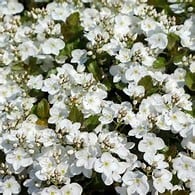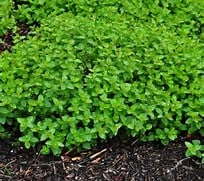Overcast and ashen, the clouds stiffened and steeled until the sky was wholly displaced by an expanse of gray while a thin ribbon of geese peppered the sky, shifting from one configuration to another. They honked and trumpeted as they passed overhead, announcing their return North and Spring’s imminent arrival.
And as we prepare for the season ahead, there’s much to be done in our yards and gardens, and one of the most important first steps is mulch. Mulch can be the answer to many of our landscape and gardening issues – a panacea of sorts, but why?
Mulch helps maintain moisture and reduces evaporation; thereby, minimizing the need for watering and capitalizing on moisture that naturally falls to the ground. Mulch also helps control weeds by suppressing germination. It is also a great insulator and can improve soil aeration and drainage. Mulch can reduce the likelihood of damage from lawn mowers and weed trimmers when the equipment gets too close, and lastly, mulch helps give planting beds and tree rings a uniform and manicured look – easy on the eyes and aesthetically pleasing.
What exactly is mulch? Mulch can be defined as any material used on the surface of the soil, including organic materials such as wood chips, straw, pine needles, cocoa hulls, peat moss and lawn clippings. Inorganic mulches include river rock, shredded rubber, volcanic rock and synthetic fabrics. Organic mulches are preferred and more widely used. They are also more cost-effective, but the choice is ultimately yours.
How should mulch be used? Mulch should be spread at a depth of 2-4″. Not to exceed 6″. For trees, the larger the mulched area, the better, as it should reach, minimally, the drip line (i.e. the outer perimeter of the branches); however, never mound the mulch up around the base of the tree, also known as “volcano” mulching. This can promote disease on the lower trunk as the tree’s bark is no longer exposed to air and light. The bark will begin to rot, and the tree can no longer protect itself from insects and disease. “Volcanic” mulching also promotes the growth of secondary roots which can encircle the trunk and choke off the main roots. This type of mulching won’t kill a tree immediately, but will lead to a slow, unnecessary death.
When should mulch be used? Almost any time is a good time, but many prefer to mulch or re-mulch in Spring. Reach out to Sweeney’s today, and let us provide and install that “cure-all”. You and your landscape will be glad you did!
Plant of the Week
Veronica Whitewater
Low growing groundcover forms a dense carpet of glossy green foliage with dainty, white flowers that bloom April – June. Foliage matures to shades of bronze and burgundy in Fall. Prefers sun to partial shade and moist, well-drained soil. Grows 3-6″ tall and 12-18″ wide. Deer/rabbit resistant and salt tolerant.
“Gentle Spring’s around the corner,
Waiting just to show her face
And to bring us flowers and sunshine;
Winter’s almost run his race…”
-Gertrude Tooley Buckingham
Best wishes,
Kim Sweeney



I need some basic work done in the backyard; mulch renewal, weeding, spreading black dirt–I know not the time to plant new grass.
In front, weeding and mulch renewal.
I welcome a visit.
Please feel free to reach out directly by calling 630-238-8600 or by filling out the “contact” form or “free consultation” form on our home page. Thanks for reading our blog, and we look forward to working with you.